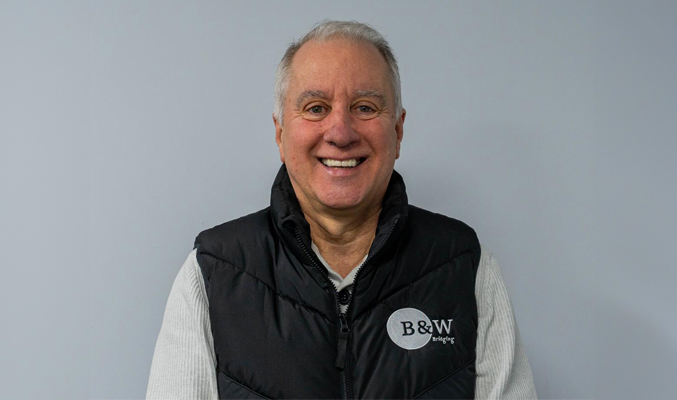RDR and qualifications: The definitive Q&A
By Bridging Loan Directory
RDR and qualifications: The definitive Q&A – Advisers are now largely clear on what they need to do to meet the requirements of the Retail Distribution Review (RDR) from 1 January 2013. However, there are still a few queries arising, particularly regarding less conventional scenarios. The Personal Finance Society (PFS) has put together a definitive guide designed to answer any questions advisers may still have…
Q: What exactly are the rules?
A: The RDR includes a requirement for advisers to raise their knowledge levels from the current benchmark Qualifications and Credit Framework (QCF), (or equivalent) Level 3 qualification, commonly the Financial Planning Certificate (FPC) or Certificate in Financial Planning (equivalent to A Level), to a Level 4 Diploma qualification (equivalent to the 1st year of a degree).
On behalf of the FSA, the Financial Services Skills Council (now the Financial Skills Partnership), created new Appropriate Exam Standards (AES). These standards define the knowledge that an adviser must have to carry out the activity of advising on packaged products.
These new AES were raised to QCF (or equivalent) Level 4 from Level 3 (with the exception of financial protection) and consist of the following areas:
- •Regulation & Ethics
- •Investment Principles & Risk
- •Personal Taxation
- •Pensions & Retirement Planning
- •Financial Protection (Level 3)
- •Financial Planning Practice
All new qualifications must cover the key areas listed above and all retail investment advisers must demonstrate that they have met the new AES in order to meet the RDR qualification requirements.
However, under its ‘no regrets’ policy, the FSA stated that individuals who already hold, or are studying towards, an existing Level 4 appropriate qualification* would not need to sit further examinations but may need to carry out ‘qualification gap-fill’ to meet any gaps in knowledge between the qualification held and the new modernised AES.
Q: So where does that put me?
A: Existing advisers will tend to fall into one of three categories:
- 1. Those who already hold an existing Level 4, or above, appropriate qualification (often referred to as a transitional or legacy qualification)
- 2. Those en route to completing an existing Level 4, or above, appropriate qualification.
- 3. Those who fall into neither of the above categories.
See the table in the link below to see where you fit in.
Q: Is the deadline (1 January 2013) the same for everybody?
A: No. In practice, there are three deadlines for three defined groups of advisers:
Group 1
Existing advisers (those competent on 30 June 2009).
•An existing adviser is defined as an authorised individual assessed as competent on 30 June 2009
•Advisers can choose either option 1 or option 2 as defined above
•Existing advisers must meet RDR requirements (including any relevant gap-fill) by 31 December 2012.
Examples: Tony was an authorised adviser on 1 April 2007. Therefore Tony must meet all RDR qualification requirements by the 31 December 2012 deadline.
Jessica, meanwhile, was an authorised adviser on 30 June 2009. In June 2011, Jessica’s authorisation status is withdrawn as she commences 12 months maternity leave. Jessica returns to her role as an authorised adviser in June 2012. As Jessica is in Group 1, the 31 December 2012 deadline applies, however she can make a waiver application to the FSA to request an extension of her deadline.
Group 2
Existing advisers (those competent after 30 June 2009 but before 1 January 2011)
•Advisers in this group can choose either option 1 or option 2 as defined above
•The 31 December 2012 deadline does not apply
•These advisers have 30 months to complete an appropriate Level 4 qualification (and relevant qualification gap-fill if required), from 1 Jan 2011
•Therefore a fixed deadline of 30 June 2013 applies.
Examples: John joins ABC Company on 1 August 2009 and, having completed the regulatory module R01, begins working under supervision on 1 September 2009. John will have the fixed deadline of 30 June 2013 to meet RDR qualification requirements.
Group 3
New or trainee advisers (those competent after 1 January 2011)
•Advisers in this group can choose either option 1 or option 2 as defined above
•The 31 December 2012 deadline does not apply
•These advisers have 30 months to complete a relevant appropriate Level 4 qualification (and relevant qualification gap-fill if required), from when they start the relevant activity.
•A rolling deadline of 30 months applies.
Advisers are now largely clear on what they need to do to meet the requirements of the Retail Distribution Review (RDR) from 1 January 2013. However, there are still a few queries arising, particularly regarding less conventional scenarios. The Personal Finance Society (PFS) has put together a definitive guide designed to answer any questions advisers may still have…
Q: What is the 30-month rule?
A: This begins when a new/trainee adviser starts the relevant activity (e.g. advising on packaged products) and is advising under supervision – not when they start a training programme. In order to advise under supervision, individuals will need to be authorised by the FSA as an approved person and hold a relevant regulatory module (e.g. R01 – Financial services, Regulation and Ethics).
The 30-month rule does not apply retrospectively so individuals who are part way through a qualification will still have 30 months from 1 January 2011. The FSA final rules allow for the 30-month ‘clock’ to be stopped indefinitely, where an individual is not carrying out the activity for a period of 60 days. Once the individual resumes the activity, the ‘clock’ restarts.
Q: Will there be any waivers?
A: To ensure it meets its equality and diversity obligations, the FSA will consider waiver applications where a disability/illness/absence may prevent an individual completing a qualification within the required timescale/deadline. The FSA expects that these waiver applications will be submitted only in exceptional circumstances.
Q: I was previously in an advice role, and would like to return. What do I do?
A: This depends on which category you fall into, as follows.
Individuals on career breaks
- •Individuals, not authorised as advisers on 30 June 2009, returning to an advisory role can choose either option 1 or option 2 as defined above – The 31 December 2012 deadline does not apply
- Individuals returning to an advisory role between 1 July 2009 and 1 January 2011 will have a fixed deadline of 30 June 2013 to complete a relevant appropriate Level 4 qualification (new or existing) and complete relevant qualification gap-fill if required.
- •Individuals returning to an advisory role after 1 January 2011 will have a rolling 30 month deadline to complete a relevant appropriate Level 4 qualification (new or existing) and complete relevant qualification gap-fill if required.
- •If an appropriate qualification is already held, the individual will have to complete the relevant qualification gap-fill by the relevant deadline.
Experienced individuals moving into an advice role - •Individuals moving to an advisory role can choose either option 1 or option 2 as defined above
- •The 31 December 2012 deadline does not apply
- •Individuals moving to an advisory role between 1 July 2009 and 1 January 2011 will have a fixed deadline of 30 June 2013 to complete a relevant appropriate Level 4 qualification (new or existing) and complete relevant qualification gap-fill if required.
- •Individuals moving to an advisory role after 1 January 2011 will have a rolling 30 month deadline to complete a relevant appropriate Level 4 qualification (new or existing) and complete relevant qualification gap-fill if required.
- •If an appropriate qualification is already held, the individual will have to complete the relevant qualification gap-fill by the relevant deadline.
Q: What is qualification gap-fill?
A: An adviser with an existing Level 4 (or higher) Appropriate Qualification does not need to sit further examinations, but can instead fill gaps between the qualification that they hold and the 2010 examination standards. Identified gaps must be filled by undertaking structured CPD.
An adviser’s gap-fill record should include:
- •The target learning outcome and associated indicative content; and
- •A record of the learning activity completed including a description of how the activity has given them the knowledge that they need to achieve the learning outcome.
CPD activity carried out in the past can be used towards gap-filling, provided it is structured CPD and meets a learning outcome as set out in the gap template.
The CII has developed a Qualification Gap-Fill Tool to enable members to identify and fill any gaps they may have.
IFA Online – News, blogs and analysis for IFAs. Visit the website now.









